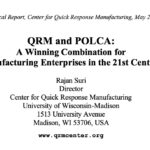The QRM Center is dedicated to the research and implementation of Quick Response Manufacturing principles. Many magazines have published case studies and articles on QRM implementations in industry.
Publications Available
Our books are available for purchase from any major retailer. Our articles, company QRM profiles, and software are available for download.
Books
This is an accordion element with a series of buttons that open and close related content panels.
It's About Time: The Competitive Advantage of Quick Response Manufacturing

by Rajan Suri
Published: 2010, Productivity Press
While everyone knows that time is money, this book demonstrates that for manufacturing companies time is a lot more money than most managers realize! The author shows how companies can take advantage of this realization to gain competitive advantage. This book is a quick read to convince executives to implement QRM strategy as well as a brief overview for all employees to help them support the QRM implementation.
In the decade since the publication of Rajan Suri’s landmark book, Quick Response Manufacturing, the innovative principles of QRM have been proven via impressive results at many companies, big and small, in a variety of industries.
While the key principles of QRM remain unchanged, after a decade of teaching QRM workshops to senior executives, Suri has developed a concise yet convincing way of presenting QRM strategy using four core concepts:
- The Power of Time – the huge impact that time has on your whole enterprise
- Organization Structure – how to structure your organization to minimize time
- System Dynamics – understanding how interactions between jobs and resources impact time and thereby how to make better decisions on capacity, lot sizes. and similar issues
- Enterprise-wide application – QRM is not just a shop floor strategy, it extends across your whole enterprise including material planning and control, supply management, office operations and new product introduction
The text contains new case studies on QRM implementation showing how QRM not only reduces lead time but also improves quality, reduces total operating cost, and enables companies to gain substantial market share.
The book also shows how factories in advanced nations can use QRM strategy to compete with manufacturers in low-wage countries. An additional chapter provides pointers for QRM implementation including accounting strategies, novel cost-justification approaches, and a stepwise process for implementation.
Also included is a bonus CD with five appendices that provide a number of practical details to assist in the success of your QRM implementation. Suri chose the topics for the appendices based on numerous experiences with companies, picking topics that most frequently needed to be addressed during the implementation.
When you are ready to start implementing QRM, you will find that these appendices contain many tips and pointers that help you work through implementation questions, and also provide simple calculation methods and tools to support the design of your QRM strategy.
You may download the appendices here:
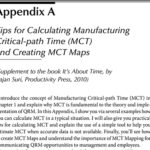
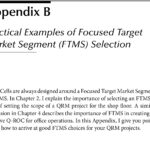
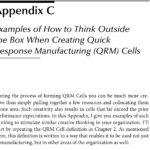

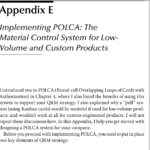
MCT Quick Reference Guide
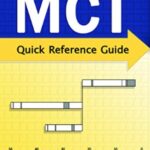
by Rajan Suri
Published: 2014, Suri Consulting and Seminars, LLC
The first comprehensive book on MCT — the time-based metric to support improvement projects
This Guide is a “must-have” for anyone using MCT in continuous improvement projects! It serves as a working reference for practitioners using the MCT metric. MCT is a time-based metric that supports continuous improvement projects, since it quantifies an organization’s total system-wide waste. Properly used, MCT does not need to be data-intensive and can be relatively easy to apply. Thus, by comparing “before” and “after” values, MCT provides a simple yet powerful metric with which to measure improvement. Although the origins of MCT are in manufacturing – the acronym stands for Manufacturing Critical-path Time – the metric can be used in many other contexts including supply chains, insurance, banking, health care, and other industries. This Guide provides the key rules and guidelines for using MCT. It serves as a reminder of the main points as well as a checklist to ensure that you have taken into account the major items needed for MCT calculation and use. Practitioners will appreciate the concise and easy-to-follow format. In particular, the formatting and binding of the Guide allows you to lay the Guide flat and easily reference all the points for a given topic at one time.
The Practitioner's Guide to POLCA: The Production Control System for High-mix, Low-volume and Custom Products
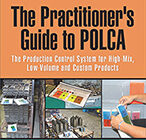
by Rajan Suri
Published: 2018, Productivity Press
Paired-cell Overlapping Loops of Cards with Authorization (POLCA) is a card-based visual control system that manages the flow of jobs through the shop floor: at each operation, it controls which job should be worked on next to meet delivery targets. POLCA ensures that upstream operations use their capacity effectively by working on jobs that are needed downstream, while at the same time preventing excessive work-in-process (WIP) build-ups when bottlenecks appear unexpectedly.
POLCA is particularly suited to companies manufacturing high-mix, low-volume and customized products. Such companies struggle with long lead times, late deliveries, and daily expediting to meet delivery dates. ERP systems are not designed to deal with this highly variable environment, and add-on software such as Finite Capacity Scheduling systems can require complex installation. Also, the Kanban system does not work well with low-volume or custom production. POLCA has delivered impressive results in such environments. The crowning aspect of POLCA is that it is simple. It does not require any complex software implementation: it can be used without an ERP system or it can seamlessly complement an existing ERP system. This book:
- Provides a step-by-step roadmap on how to implement POLCA; invaluable for both companies that wish to implement POLCA as well as consultants and academics advising such companies.
- Explains the concepts in practical and easy-to-understand terms with detailed shop-floor examples.
- Includes over 100 illustrations for understanding how POLCA works as well as for elaborating on details of the implementation steps.
- Contains case studies written by company owners and executives documenting their POLCA implementation process and the results achieved in various industries in six countries.
Quick Response Manufacturing: A Company-wide Approach to Reducing Lead Times

by Rajan Suri
Published: 1998, Productivity Press
Lean manufacturing, a JIT strategy, was perfected by Toyota after World War II. Quick Response Manufacturing (QRM) is the next level for competitive businesses. Developed for today’s dynamic market, this definitive volume on the subject of Quick Response Manufacturing demonstrates how a growing number of companies in the U.S. Midwest are leapfrogging their lean competitors. QRM strategy is particularly suited to reducing lead times for low-volume, high-mix or custom-engineered products.
Included are case studies of seven companies—including John Deere, Ingersoll and Trek Bicycle—that successfully use QRM as well as 15 specific steps to implement your own successful QRM program; hundreds of tools and examples to show you how QRM succeeds; and discussion on cells, teams and the need for employee empowerment.
This is an accordion element with a series of buttons that open and close related content panels.
Filling the Gap: Rethinking supply management in the age of global sourcing and lean
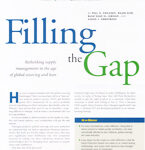
by Paul D. Ericksen, Rajan Suri, Bash’shar El-Jawhari, Aaron J. Armstrong
Published: APICS magazine, February 2005
For many OEMs, order fulfillment — being able to deliver product to market quickly and flexibly — has been dramatically affected by lean initiatives, global sourcing and asset reduction. OEMs no longer have nearby suppliers, and asset-reduction initiatives have led them to adopt build-to-demand strategies. Suppliers struggle to efficiently and quickly produce fluctuating quantities and the often broad mix of products required by today’s OEMs.
While global sourcing and asset reduction can lead to significant financial improvements, they also pose order fulfillment risk. How can manufacturers and suppliers fill the gap between operating lean and yet get the product to customers when they are ready to buy?
Read this article to learn how MCT — Manufacturing Critical-path Time — and Quick Response Manufacturing are responding to this dilemma.
How to Plan and Implement POLCA
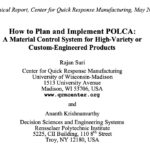
by Rajan Suri and Ananth Krishnamurthy
Published: 2003
In today’s marketplace, there is increasing demand for customized products, either through customers choosing from a large menu of options, or even through companies custom-engineering products for individual orders. Manufacturers that have to supply such high-variety or custom-engineered products are struggling to implement effective material-control strategies on the shop floor.
These companies are finding that lean manufacturing concepts such as flow, takt time and pull/kanban systems are not meeting their needs. POLCA (Paired-cell Overlapping Loops of Cards with Authorization) is a material-control system designed with these situations in mind. It is a hybrid push-pull system that combines the best features of card-based pull (kanban) systems and push (MRP) systems. At the same time, POLCA gets around the limitations of pull systems in high-variety or custom-product environments as well as the drawbacks of standard MRP, which often results in long lead times and high WIP.
POLCA was developed as part of the overall strategy of Quick Response Manufacturing (QRM), which focuses on lead time reduction throughout the enterprise. In partnership with its member companies, the Center for Quick Response Manufacturing has implemented POLCA at several factories in the United States and Canada. In this paper, we first give an overview of the POLCA system, explain how it works, and provide qualitative comparisons with pull/kanban systems.
Then we present a step-by-step procedure for implementing POLCA in a factory. Using examples from the implementation of POLCA at several plants, we address practical issues such as computing the number of POLCA cards needed, determining the quantum of work a POLCA card represents, and addressing part shortages. We also discuss the manifold performance improvements that have resulted from these implementations, including reduction in lead time and
Keep work on the move: one shop's holistic approach to flow, from quoting to shipping
Manufacturing Critical-Path Time (MCT) – The QRM Metric for Lead Time Definition
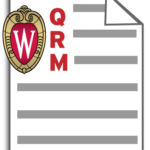
by Paul D. Ericksen, Nathan J. Stoflet, Rajan Suri
Published: Center for Quick Response Manufacturing, April 2007
Need a Light?
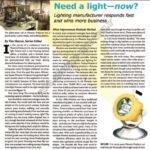
by Tim Heston, Senior Editor
Published: October 2011 The Fabricator
Case study of Phoenix Products.
QRM and POLCA: A Winning Combination for Manufacturing Enterprises in the 21st Century
What Kind of "Numbers" can a Company Expect After Implementing Quick Response Manufacturing?

by Francisco Tubino and Rajan Suri
Published: 2000 Quick Response Manufacturing Conference Proceedings
Quick Response Manufacturing (QRM) is a companywide approach to lead time reduction proven successful at many manufacturing enterprises. Currently, there is detailed literature on QRM principles, on how to implement QRM, and on its potential benefits. However, this literature tends to be anecdotal and descriptive, and the link that ties and quantifies actual cost benefits achieved with specific lead time reduction targets has not been formally established.
The purpose of this study is to obtain more empirical data and to develop rules to quantify the benefits of QRM. In this study, we gather detailed data from several company projects on lead time reduction. Then we use a recently developed methodology to quantify the benefits of QRM.
In parallel to this, based on selected hypotheses, we derive a simple functional form for the impact of lead time reduction on costs. We refine this functional relationship via the empirical data. The result is a simple, quantitative “rule of thumb” that managers can use to set lead time reduction targets.
The empirical data also clearly show a baseline link between lead time reduction and cost savings achieved. In addition, we present data on the impact of lead time reduction on several other performance measures including quality, labor productivity and on-time delivery.
Although this is a preliminary study on these issues, we hope that the general approach and the simple rule of thumb will be of immediate use to both practitioners and researchers in this field.
This is an accordion element with a series of buttons that open and close related content panels.
Business Velocity at TCI Creates Barrier to Domestic and Offshore Competition

by Kathleen Watson
Published: November 2017, Center for Quick Response Manufacturing
Company profile: TCI
Marel Manufacturing System Drives Speed and Quality Throughout its Global Operations

by Kathleen Watson
Published: February 2020, Center for Quick Response Manufacturing
Company profile: Marel Manufacturing
QRM Assures a Bright Future for Lighting Specialist Phoenix Products

by Kathleen Watson
Published: December 2018, Center for Quick Response Manufacturing
Company profile: Phoenix Products
QRM Empowers RenewAire to Become Industry Leader

by Kathleen Watson
Published: November 2017, Center for Quick Response Manufacturing
Company profile: RenewAire
QRM Helps Put Freedman Seating Company in the Driver's Seat
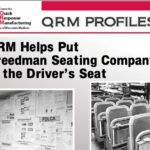
by Kathleen Watson
Published: February 2020, Center for Quick Response Manufacturing
Company profile: Freedman Seating Company
QRM Helps Rosenboom Meet Growth Challenges

by Kathleen Watson
Published: April 2020 Quick Response Manufacturing
Company Profile: Rosenboom
Raising the Bar at Alexandria Industries

by Kathleen Watson
Published: February 2020, Center for Quick Response Manufacturing
Company Profile: Alexandria Industries
Strategic Thinking, Culture Change, and QRM Drive Lead Time Reduction at Banner Service Corporation

by Kathleen Watson
Published: February 2020, Center for Quick Response Manufacturing
Company profile: Banner Service Corporation
Weathering the Perfect Storm at National Oilwell Varco

by Kathleen Watson
Published: February 2020, Center for Quick Response Manufacturing
Company profile: National Oilwell Varco
What Would You Do with An Extra Week of Time, Compliments of Nicolet Plastics

by Kathleen Watson
Published: February 2020, Center for Quick Response Manufacturing
Company profile: Banner Service Corporation
This is an accordion element with a series of buttons that open and close related content panels.
MCT Mapping Tool
Created by the QRM Center
In partnership with industry, the QRM Center has developed Manufacturing Critical-path Time (MCT), a precise QRM metric for lead time designed to capture how order processing, manufacturing, raw material procurement and shipping are linked while fulfilling customer orders. Our Microsoft Excel-based tool provides QRM practicioners a quick and simple way to measure MCT, create MCT maps, and discover improvement opportunities.

